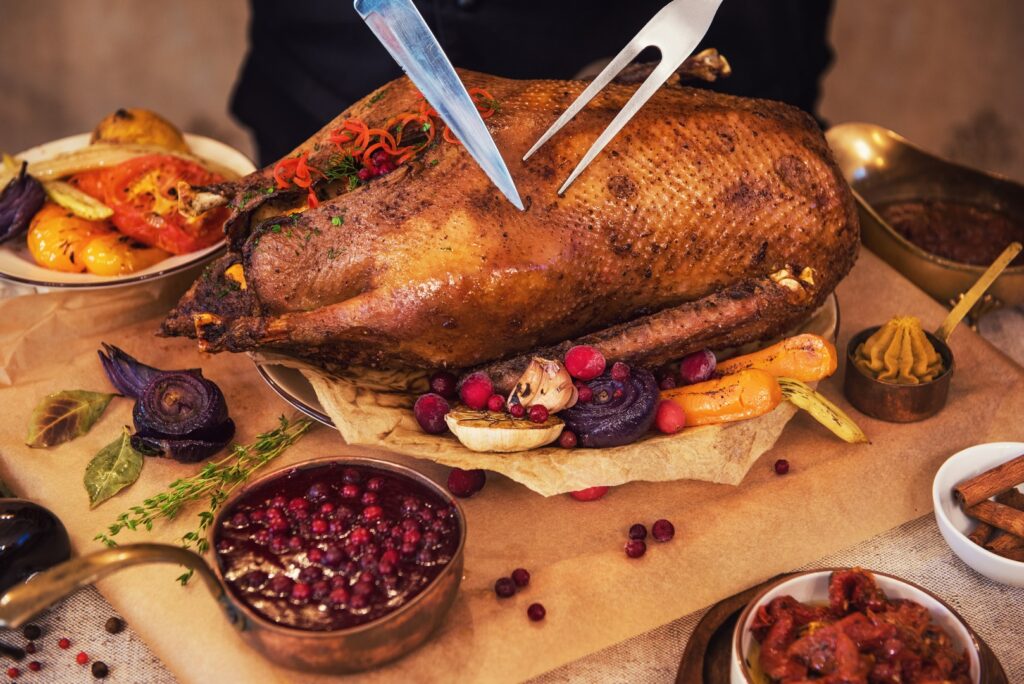2020
European goose meat on Saint Martin’s Day
European goose meat on Saint Martin’s Day
Due to the characteristics of their species, geese are bred seasonally. Fresh goose meat is only available in November and December in the European countries; during other seasons, it is only available frozen. This is where the proverb “the best goose on Saint Martin’s Day” comes from.
Saint Martin’s Day is November 11th. Tradition has it that the slaughter of geese starts around this date. This is attributable to the fact that these birds are not fully domesticated and their reproductive cycle is closer to wildlife. Geese lay their eggs in spring; their juveniles reach adulthood in autumn.

Saint Martin’s Day has been celebrated in many European states for several hundred years, including Poland. Back in the day, when the breeding of birds at homesteads was common, the first goose in the season emphasised the importance of this holiday. At present, goose meat reigns at autumn culinary festivals, restaurants and home during holidays and family gatherings. This meat is not as popular as chicken or turkey because of its availability, price, higher fat content and necessity of longer roasting; as a rule, it is eaten on more important occasions.
Geese are bred in free-range conditions. These birds hate being indoors and spend most of their time outdoors on grassland. They are reared on fodder only in autumn and winter. This method of breeding influences not only the quality of meat but also the quality of feathers. Goose down and feathers are light and are characterised by high insulating properties. Therefore, this material is used to fill in duvets, cushions, winter jackets and sleeping bags. Products which come with goose down filling are considered premium products in their category, as they are lighter and warmer than those with synthetic filling.
In 2019, the European Union states exported 644 tonnes of down and feather to Japan worth 46.2 million euros; the most came from Hungary, Poland and Germany[1]. Aside from Japan, other major recipients of European feathers are China, Taiwan and the United States. Feathers from Europe are in much greater demand in Japan than meat.
In 2019, the country imported 48 tonnes of goose meat from the European Union, worth almost 1.3 million euros, and was among the leading importers of this type of meat. Only Hong Kong (2.75 thousand tonnes of meat worth 10.2 million euros) and Israel (1.5 thousand tonnes worth 20.1 million euros)[2] imported more goose meat.

Get inspired by the recipes on our website and celebrate Saint Martin’s Day with us!
[1] https://madb.europa.eu/madb/statistical_form.htm product code CN 050510
[2] https://madb.europa.eu/madb/statistical_form.htm product code CN 020755



